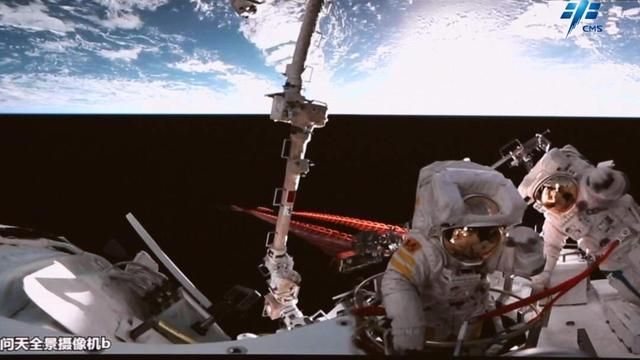Why is the background of the spacemen's outspoken image?
Author:Jilin Daily Time:2022.09.03

On September 1st, Chen Dong and Liu Yang, the Shenzhou 14 of my country, successfully walked out of the door. This is the first time that the Chinese astronauts have taken the main passage from the space station -asked the sky experimental cabin.
However, the careful friends will find that in the previous space staff out of the cabin, the starry background behind the astronauts is actually dark. Where did the stars go to the vast stars?
Star Light is "filtered" by the camera
Yang Yuguang, vice chairman of the International Aerospace Space Transport Committee, told reporters from the Science and Technology Daily that what caused this phenomenon is not the "bizarre disappearance" of these stars, but the "selection" result of the camera exposure parameters. That is to say The stars in photos or videos are "invisible" in deep space.
"In the universe, the stars are darkest. On the contrary, space stations and astronauts under sunlight will become very bright. The camera cannot see the bright object at the same time, but also 'see clearly' particularly darkness' particularly dark How to choose an object? Obviously, in the outlet event, the shot of the astronauts, the space station cabin, and the details of the earth are the primary tasks, that is, set the corresponding camera exposure parameters based on bright objects. "Yang Yuguang said.
Specifically, when the camera locks in space stations and space offices, because the space station and the astronauts are very bright, the camera must control the amount of light and reduce the exposure time, so that the normal exposure screen can be taken. This low -value adjustment of exposure and aperture will inevitably "filter" the faint light from the stars in the space, so the picture presented is the dark night sky, there is no star on it.
If you want to shoot a relatively dim star, the camera should increase the amount of light and increase the exposure time. However, this will cause the space station and astronauts in the picture to "overexpos" and become white. "The stars in the universe have always been there, but in order to shoot the ideal astronauts out of the cabin screen, we have" ignored "the star man's way through the camera regulation." Yang Yuguang concluded.
Watching the stars in space is different
The screen of the space clerk "filter" the stars, so can the astronauts in space see the stars? Is it the same as the stars we see on the earth?
Ping Jinsong, a researcher at the National Observatory of the Chinese Academy of Sciences, pointed out that there is no atmospheric scattered in space, and the sunlight spreads along the line, so space will not be illuminated. In the dark space, astronauts can see the stars in the sky.
"When the astronauts just stepped out of the cabin door, if they looked at the earth, their eyes were adapted to bright things. At this time, looking up at the dark universe, the stars may not be clear for a while. After the darkness, you can see the stars. "Yang Yuguang said.
On October 15, 2003, the astronaut Yang Liwei took the Shenzhou 5 manned spacecraft and opened the first space gaze of Chinese astronauts. According to his memories, the moon and stars that you see in space are clearer and translucent, and the stars do not "blink".
On September 27, 2008, astronauts Zhai Zhigang came out of the cabin from Shenzhou VII. The Chinese "strolled space" for the first time. The space in front of him "can't look to the end", and the stars he sees are "more than the earth."
On December 9, 2021, at the "Tiangong Class" in China Space Station, astronaut Wang Yaping revealed that astronauts can see 16 days of daylight every day because space stations around the earth every 90 minutes.
"The stars that astronauts see in space are really different from what we see on the earth." Yang Yuguang said that there are generosity or interference of factors such as atmosphere and artificial light sources on the planet, making the stars weaker, and it will "one of them a one, and it will" one of them one, and it will "one of them one. "Flashing", the number of stars that can be visible to the naked eye are even less. In space, because there is no atmospheric blocking or blocking, there are three characteristics of the stars watched by the astronauts: less flashing, clearer and brighter, and more.
Ping Jinsong also said that space is vacuum and there is no atmospheric turbulence, so the stars will not "blink", only stars, no stars flash. Because of this, no stars, planets, or the moon will not appear dizzy or halo, and the stars are even more translucent.
Source: Science and Technology Daily
- END -
Core logic of digital transformation of enterprises | Liu Jin Management Essays

It is not new to promote digitalization by Liu Jin/Wen Enterprise. The commercial ...
The Tiandong Project was tried in October and is a major national scientific and technological infrastructure. It is located in Lizhou, Hebei
Recently, it is learned from the Langzhou Teaching Experimental Field of China Agr...